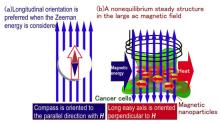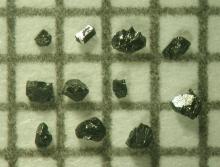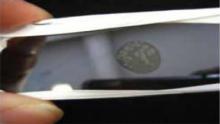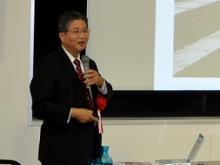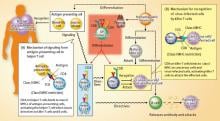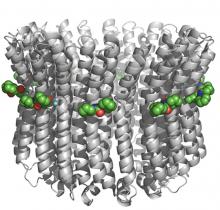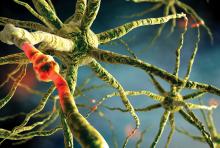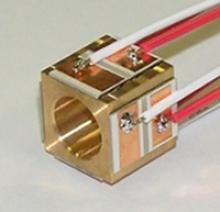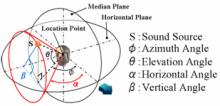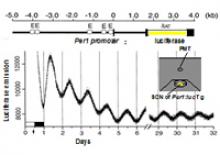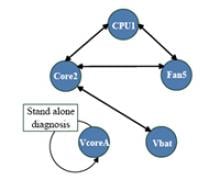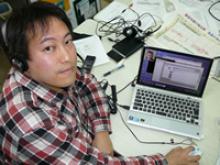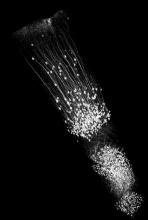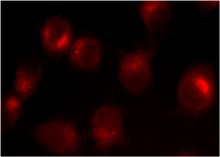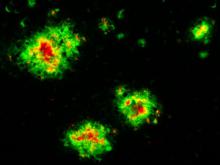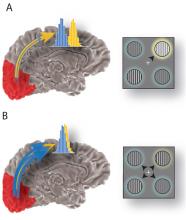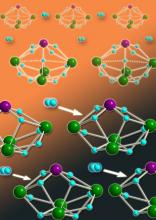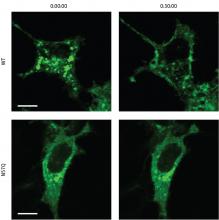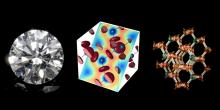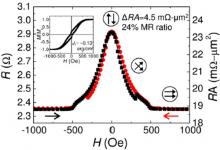Japan
News
23 Dec 2011
The Japan Synchrotron Radiation Research Institute (JASRI), Tokyo Institute of Technology, NIMS, and Kyoto University confirmed for the first time that it is possible to achieve ultra-high speed switching in a time of 200 nanoseconds with a new piezoelectric thin film which possesses micro regions called “nanodomains.”

23 Dec 2011
RIKEN President Ryoji Noyori (University Professor, Nagoya University; Nobel Prize in Chemistry, 2001) was elected as a foreign member by the Chinese Academy of Sciences.
23 Dec 2011
First Detailed Elucidation of Heat Generation Mechanism.
23 Dec 2011
The Tissue Regeneration Materials Unit of the International Center for Materials Nanoarchitectonics, National Institute for Materials Science succeeded in developing a matrix material which can control the differentiation of stem cells for regenerative medicine.
23 Dec 2011
A high-pressure growth technique creates single magneto-electric crystals useful for future generations of electronic memory
23 Dec 2011
A new spectroscopy technique enables the investigation of two-dimensional electron states both at the surface and within crystals
23 Dec 2011
Infectious agents released from the late blight pathogen use a sticky patch of amino acids to adhere to potato plant cells
23 Dec 2011
Identification of genetic variations that increase the risk of adult asthma will lead to better understanding of this disease
22 Dec 2011
The research team of Associate Professor Koji Arimitsu at Tokyo University of Science has developed photobase generators capable of highly efficient production of strong bases. This will enable the practical use of photopolymers that utilize photobase generators - something which has hitherto not been considered possible.
21 Dec 2011
the National Institute for Materials Science has entered a Comprehensive Collaborative Agreement (a sister institute agreement) with Institute of Materials Science, Vietnam Academy of Science and Technology (IMS-VAST) in Vietnam.
20 Dec 2011
Professor Fujishima, President of Tokyo University of Science talked about experience in photocatalysts
16 Dec 2011
Ichiro Taniuchi at the RIKEN Research Center for Allergy and Immunology is carrying out research to understand the mysteries of organism evolution by investigating the mechanism responsible for the differentiation of T cells.
16 Dec 2011
Insights obtained from a structural and functional analysis of an ion-pumping protein could benefit future drug discovery efforts
16 Dec 2011
Modifications to chromosomal proteins help ensure that brain-specific sugars are produced only in the appropriate tissues.
13 Dec 2011
The possibility of designing a cubic stator in a rotary-linear piezoelectric actuator is intriguing and technically challenging. Theoretically, the vibrational behaviour of cubic stators remains unclear when modeled using the finite element method (FEM).
13 Dec 2011
In late years, the development of a human robot and the use of the portable information terminal have become popular. Sound interface plays a very important role in this.
13 Dec 2011
Insights in neuroscience research from the Toyohashi Tech Bulletin
13 Dec 2011
The prevalence of computer networks for sharing resources places increasingly high requirements on the reliability of data centres. The simplest way to diagnose abnormalities in these systems is to monitor the output of each component but this is not always effective.
13 Dec 2011
In everyday life humans use speech, gestures, facial expressions, touch to communicate. And, over long distances we resort to text messages and other such modern technology. Notably, when we interact with computers we rely exclusively on text and touch in the form of the keyboard/mouse and touch screens.

09 Dec 2011
The Research Institute for Advanced Network Technology (RIANT) at Waseda University has formed the Demand Response Technology Research Program, together with nine other companies.
09 Dec 2011
A treatment that renders brain tissue transparent allows neuroscientists to visualize neural circuitry at once-unattainable depths
09 Dec 2011
A newly developed group of fluorescent probes highlights cancer cells resistant to anticancer drugs
09 Dec 2011
Clarification of the role of a specific protein fragment that forms toxic clumps and damages the brain could lead to therapeutics for Alzheimer's disease
08 Dec 2011
Scientists at the RIKEN Brain Science Institute (BSI) have uncovered mechanisms that help our brain to focus by efficiently routing only relevant information to perceptual brain regions.
05 Dec 2011
Japanese researchers from the Toyohashi University of Technology develop an online search tool for rapidly detecting spoken words in speech and video on the internet
02 Dec 2011
Real-time x-ray measurements of remarkable rare-earth/transition metal clusters expose the secrets of storing and releasing hydrogen gas
02 Dec 2011
A single sugar molecule plays an outsized role in helping a glucose-transporting protein respond promptly to insulin signals
02 Dec 2011
Based on non-linear optical effects, imaging with light has reached atomic precision in the most precise microscope ever built.
30 Nov 2011
Researchers at the National Institute for Materials Science, in collaboration with members of the Magnetic Materials Unit, have demonstrated a scissors-type trilayer magnetoresistance device that is promising for narrow readers of ultra-high density hard disk drives (HDD).
30 Nov 2011
Ukraine visit Japan's National Institute for Materials Science
Researchers
Sorry, no researchers coming up for this topic.
Giants in history
Ruby Sakae Hirose (1904 – 1960) was a Japanese-American scientist whose research contributed significantly to our understanding of blood clotting, allergies and cancer.
Haisako Koyama (1916 – 1997) was a Japanese solar observer whose dedication to recording sunspots – cooler parts of the sun’s surface that appear dark – produced a sunspot record of historic importance.
Michiaki Takahashi (17 February 1928 – 16 December 2013) was a Japanese virologist who developed the first chickenpox vaccine.
Toshiko Yuasa (11 December 1909 – 1 February 1980) was the first Japanese female physicist whose research on radioactivity shed light on beta decay – the process in which an atom emits a beta particle (electron) and turns into a different element.
Baron Kitasato Shibasaburo (29 January 1856 – 13 June 1931) was a Japanese physician and bacteriologist whose work led to a new understanding of preventing and treating tetanus, diphtheria and anthrax.
By isolating soil microorganisms and studying the compounds they produce, Satoshi Omura (born 1935) discovered almost 500 organic compounds with unique properties that were produced by these microorganisms, including many new antibiotics.
In 1915, pathologist Katsusaburo Yamagiwa and his research assistant Koichi Ichikawa became the first to prove that chronic exposure to chemicals can cause cancer.
In 1915, Koichi Ichikawa along with pathologist Katsusaburo Yamagiwa became the first to prove that chronic exposure to chemicals can cause cancer.
Reiji Okazaki (8 October 1930 – 1 August 1975) and Tsuneko (7 June 1933) were a Japanese couple who discovered Okazaki fragments – short sequences of DNA that are synthesized during DNA replication and linked together to form a continuous strand.
Tsuneko (7 June 1933) and Reiji Okazaki (8 October 1930 – 1 August 1975) were a Japanese couple who discovered Okazaki fragments – short sequences of DNA that are synthesized during DNA replication and linked together to form a continuous strand.
Husband and wife team, Kimishige (3 December 1925 – 6 July 2018) and Teruko Ishizaka (28 September 1926 – 4 June 2019) discovered the antibody class Immunoglobulin E (IgE) that triggers allergic reactions. They also discovered that IgE antibodies attach to white blood cells, known as mast cells, releasing histamine, which causes allergic reactions.
Husband and wife team, Kimishige (3 December 1925 – 6 July 2018) and Teruko Ishizaka (28 September 1926 – 4 June 2019) discovered the antibody class Immunoglobulin E (IgE) that triggers allergic reactions. They also discovered that IgE antibodies attach to white blood cells, known as mast cells, releasing histamine, which causes allergic reactions.
Japanese chemist Takamine Jokichi (3 November 1854 – 22 July 1922) founded the Tokyo Artificial Fertilizer Company, where he isolated a starch-digesting enzyme (named takadiastase) from the fungus Aspergillus oryzae.
Hideki Yukawa (23 January 1907 – 8 September 1981) was awarded the Nobel Prize in Physics in 1949 for predicting the existence of the pi meson subatomic particle. Japan’s first Nobel laureate, Yakawa also expressed his support for nuclear disarmament by signing the Russell–Einstein Manifesto in 1955.
Shinichiro Tomonaga (31 March 1906 – 8 July 1979), together with Richard Feynman and Julian Schwinger, was awarded the Nobel Prize in Physics in 1965, for their contributions to advance the field of quantum electrodynamics. Tomonaga was also a strong proponent of peace, who actively campaigned against the proliferation of nuclear weapons and promoted the peaceful use of nuclear energy.
Japanese chemist Kenichi Fukui (4 October 1918 – 9 January 1998) was the first Asian scientist to be awarded the Nobel Prize in Chemistry. Together with Roald Hoffman, he received this honour in 1981 for his independent research into the mechanisms of chemical reactions.
Minoru Shirota (April 23, 1899 – March 10, 1982) was a Japanese microbiologist who invented the popular fermented drink Yakult.
Japanese physicist Ukichiro Nakaya (1900-1962) made the world’s first artificial snowflakes. He started his research on snow crystals in the early 1930s at Hokkaido University, where there is an unlimited supply of natural snow in winter. By taking over 3,000 photographs, he established a classification of natural snow crystals and described their relationship with weather conditions.
The techniques that make industrial pearl culturing possible were developed over a century ago at the Misaki Marine Biological Station in Japan. The station’s first director, Professor Kakichi Mitsukuri, emphasized to Kokichi Mikimoto in 1890 that stimulating pearl sac formation was important for pearl growth, and they went on to successfully develop methods for culturing pearls.
The field of solid-state ionics originated in Europe, but Takehiko Takahashi of Nagoya University in Japan was the first to coin the term ‘solid ionics’ in 1967. ‘Solid-state ionics’ first appeared in 1971 in another of his papers, and was likely a play on ‘solid-state electronics’, another rapidly growing field at the time.
Chika Kuroda (24 March 1884 – 8 November 1968) was a Japanese chemist whose research focussed on the structures of natural pigments.
Motoo Kimura (13 November 1924 – 13 November 1994) was a Japanese theoretical population geneticist who is best remembered for developing the neutral theory of molecular evolution.
Osamu Shimomura (27 August 1928 – 19 October 2018) was a Japanese organic chemist and marine biologist who dedicated his career to understanding how organisms emitted light.
Kikunae Ikeda (8 October 1864 – 3 May 1936) was a Japanese chemist who discovered the fifth basic taste, umami.
Umetaro Suzuki (7 April 1874 – 20 September 1943) was a Japanese scientist best remembered for his research on beriberi, a disease caused by vitamin B1 deficiency, characterized by limb stiffness, paralysis and pain.
Kono Yasui (16 February 1880 – 24 March 1971) was a Japanese botanist who researched the genetics of poppies, corn and spiderworts and surveyed the plants that had been affected by the nuclear fallout after the atomic bombings of Hiroshima and Nagasaki.
Hitoshi Kihara (1893 – 1986) was one of the most famous Japanese geneticists of the 20th century. One of his most significant contributions was identifying sex chromosomes (X and Y) in flowering plants.
Michiyo Tsujimura (17 September 1888 – 1 June 1969) was a Japanese agricultural scientist and biochemist recognized for her research of green tea components.
A Japanese surgeon, Tetsuzo Akutsu (20 August 1922 – 9 August 2007) built the first artificial heart capable of keeping an animal alive.
Ogino Ginko (3 March 1851 – 23 June 1913) was the first registered female doctor to practise modern medicine in Japan.
Japanese geochemist Katsuko Saruhashi developed the first method and tools for measuring carbon dioxide in seawater


